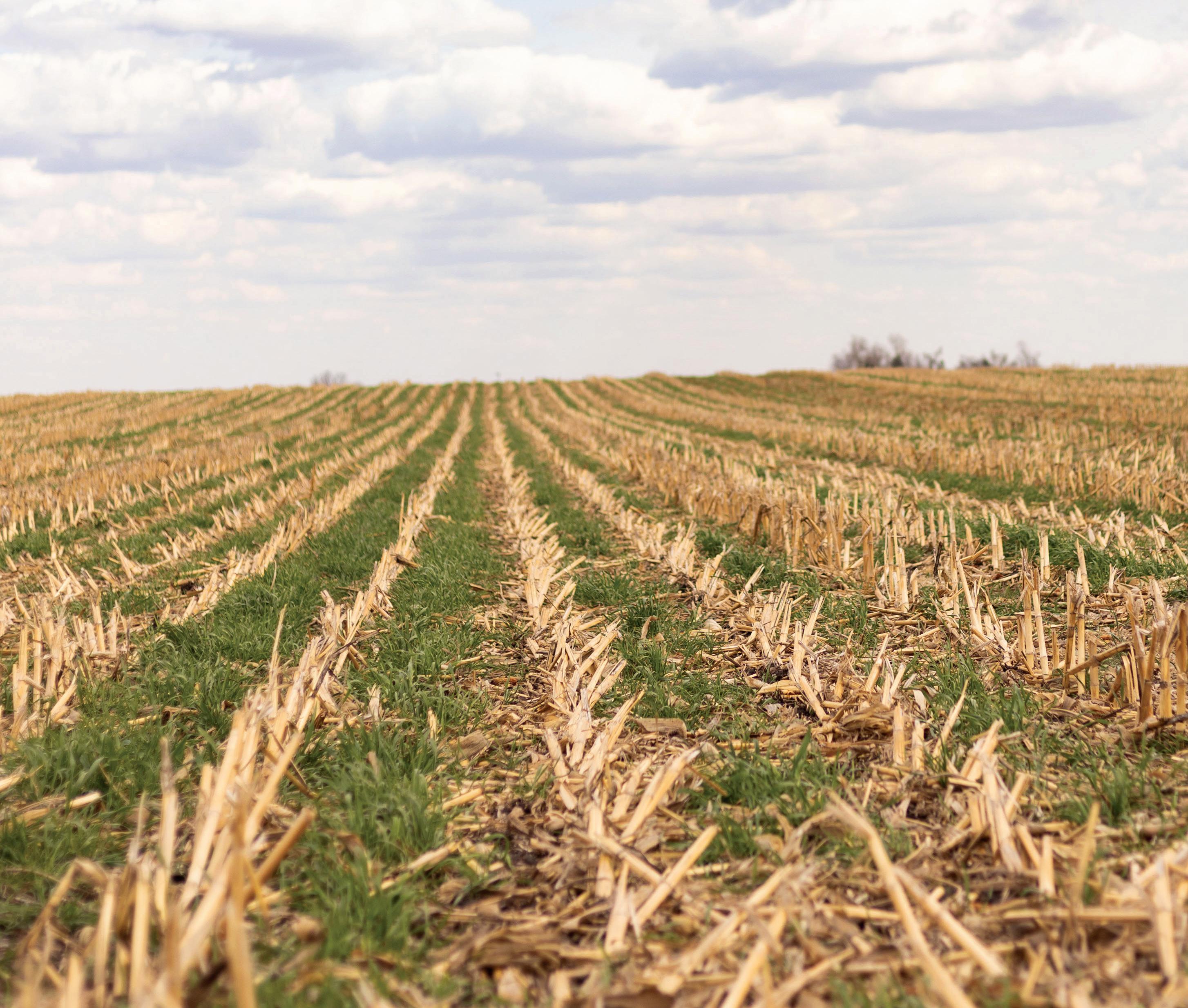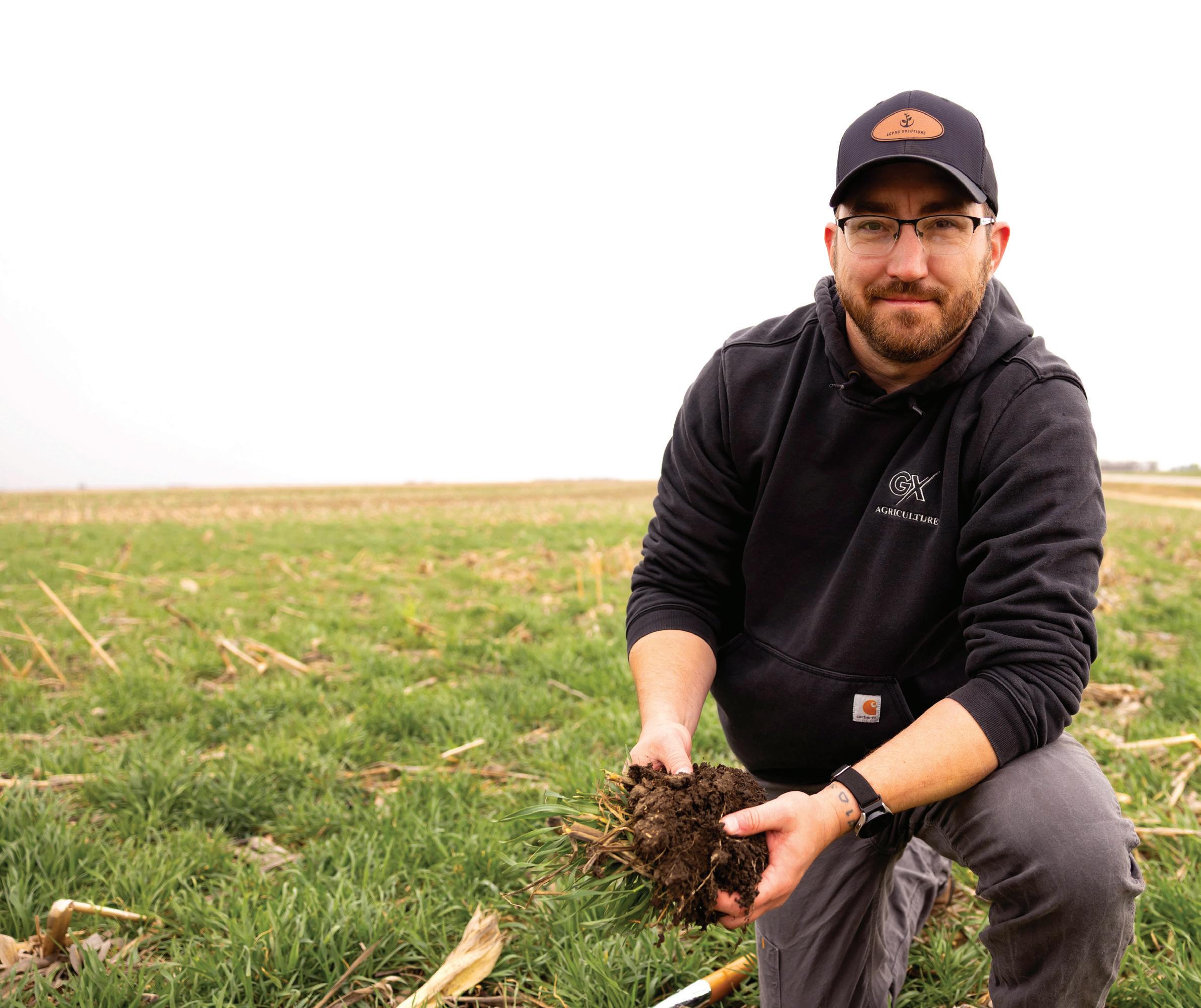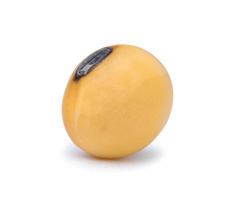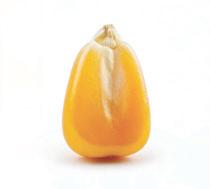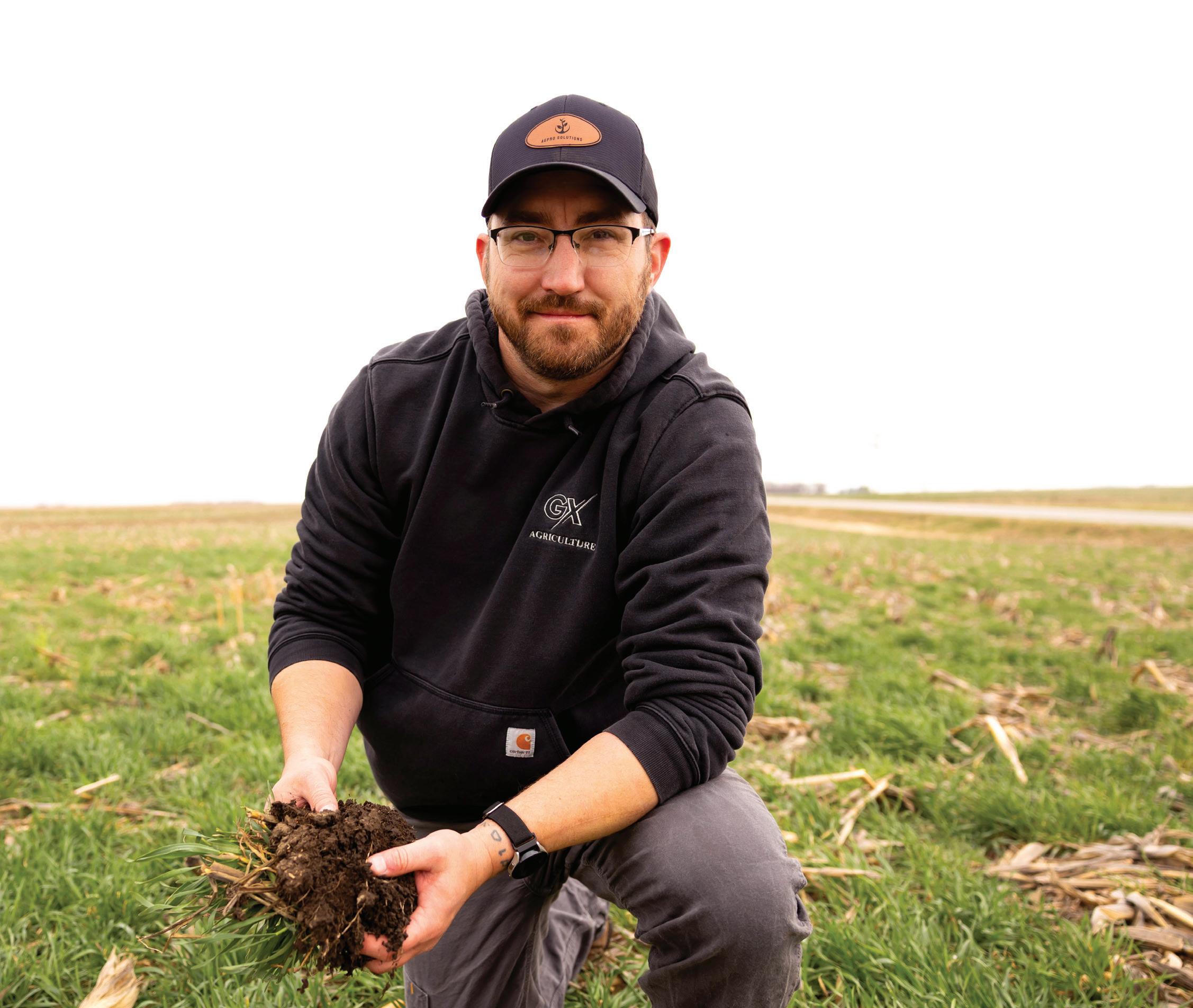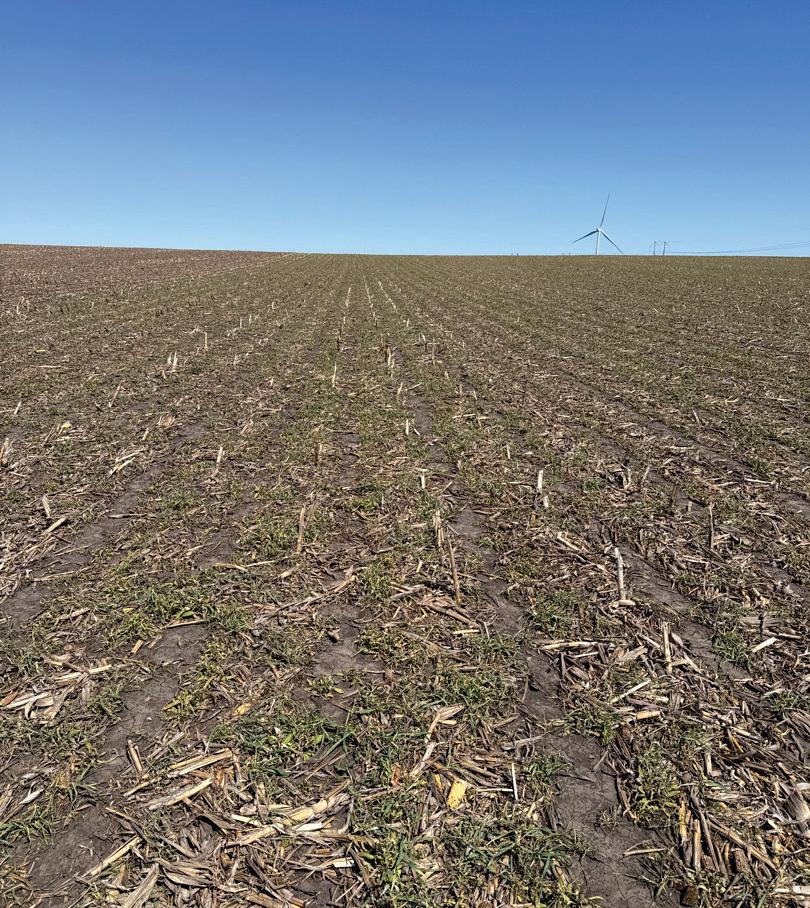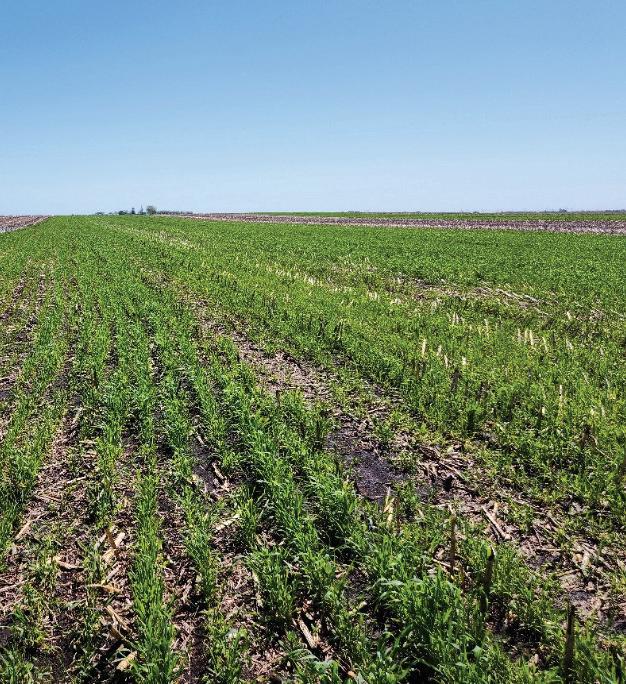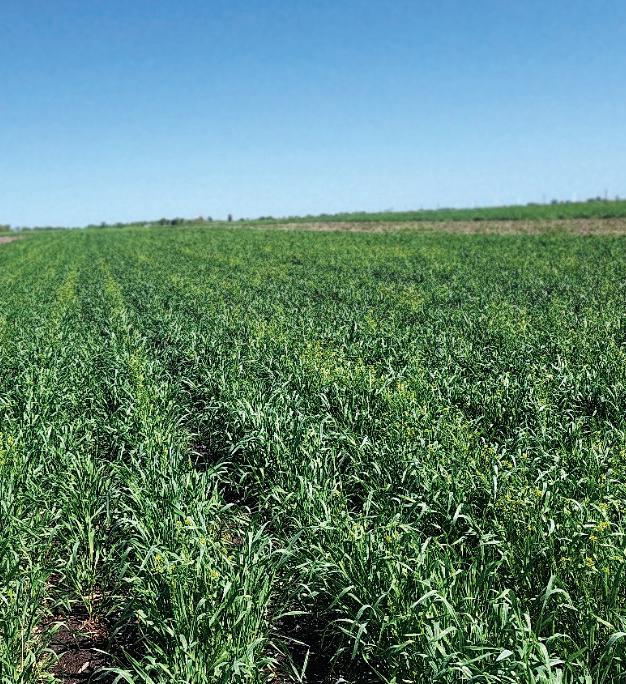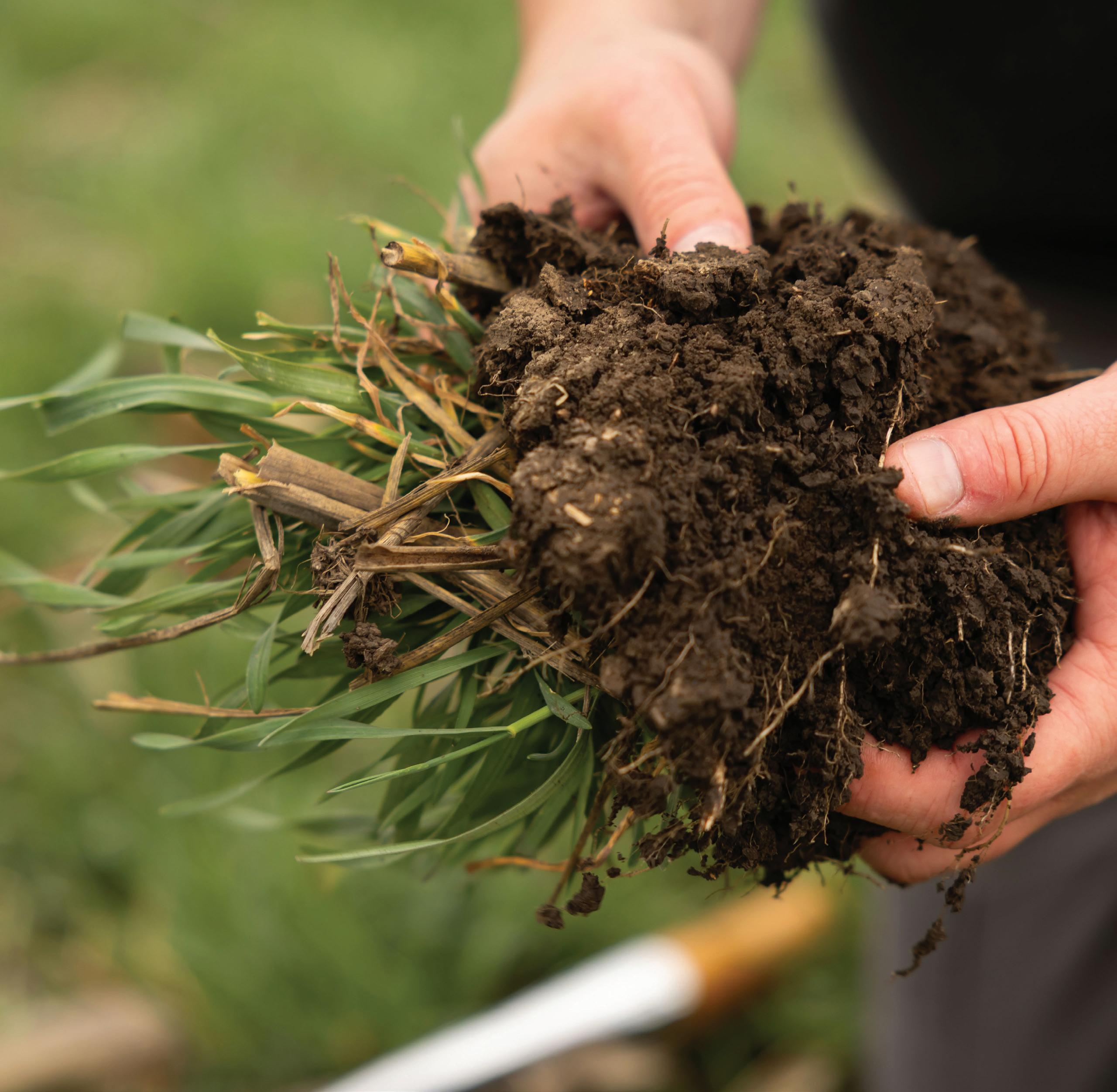Cover Crops in Iowa LONG TERM STUDY RESULTS
Cover crop adoption by farmers has become more common in Iowa in recent years, increasing from 50,000 acres in 2010 to 3.8 million acres in 2023. Cover crops have proven to be effective at reducing erosion and scavenging nitrates from the soil.
Some farmers are being incentivized to grow cover crops through public and private cost share programs, and there are programs that monetize the reduction of crop carbon intensity scores by utilizing cover crops and other conservation practices.
Despite the increase in acres, some farmers still have questions about cover crops, including: Do cover crops impact crop yields? How does termination timing affect the following cash crop? How do cover crops affect soil health?
This study demonstrated three key findings from the addition of cover crops in a corn-soybean cropping system:
Iowa Long Term Cover Crop Study
Iowa Soybean Association, in partnership with Iowa Corn Promotion Board and the Soil Health Partnership, implemented on-farm, long-term replicated strip trials with Iowa farmers. This research evaluated the effects of cover crops on soil health and yield outcomes in farmers’ fields. It is the longest running on-farm analysis of cover crops in existence. Several Iowa farmers in this study have had cover crop strips since 2016.
“As a long-term practitioner of cover crops and no-till, I enrolled in the Soil Health Partnership in 2016 to compare my practices with more traditional practices. I have been able to positively quantify my stewardship practices in the form of comparable yields and soil health benefits,” says Mark Mueller of Bremer county .
“We
have reduced compaction, increased water infiltration and holding capacity, reduced nutrient leaching and soil erosion, improved weed control, and can re-enter fields more quickly after rain events.”
CHRIS
GAESSER, ADAMS COUNTY
25
2-9
72 site-years of corn and 56 site-years of soybeans were analyzed in this study. Yields were similar for both corn and soybeans with and without cover crops.
SOYBEAN YIELDS
No Cover: 64.6 Cover: 63.2
CORN YIELDS
No Cover: 229 Cover: 227
“We do quite a bit of cover crops. I haven’t seen any data from the project yet that would make me want to change any practices, but we are still looking at the trial data every year to see what it shows.”
AJ BLAIR, WEBSTER COUNTY
Timely cover crop termination is an essential part of their management because higher biomass increases competition with the cash crops and decreases their yield potential. Early season fertility and timely termination are critical to the success of your cash crop.
Compaction was reduced and aggregate stability was increased in the cover crop strips. Reduced soil compaction promotes root growth, improves soil structure, and enhances soil water permeability. Nitrates are reduced prior to termination as cover crops utilize them from throughout the soil profile to support their below- and above-ground biomass.
Talk to your local crop advisor or conservation agronomist to get
“This study will assist farmers in making the decision to implement cover crops into their operation, by better understanding best practices for management, as well as being able to see the tangible benefits of cover crops over the long term.”
Ankeny, Iowa 50023
515-251-8640
Corn 5505 NW 88th Street Johnston, Iowa 50131
515-225-9242 corninfo@iowacorn.org Iowa Soybean Association 1255 SW Prairie Trail Parkway
iasoybeans.com
MICHAEL FOSDICK, DES MOINES COUNTY
